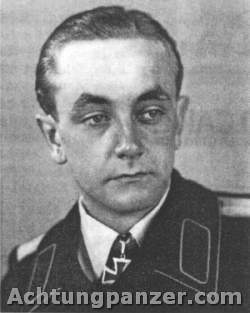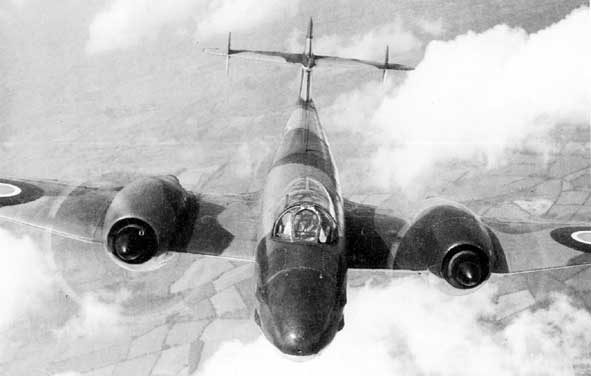Well, I feel obligated to open this topic, I accidentally erased the older one.
Aniway this topic is for the fustrated of what If aircrafts like the famous Ta-183.


Well, I feel obligated to open this topic, I accidentally erased the older one.
Aniway this topic is for the fustrated of what If aircrafts like the famous Ta-183.

Great pic.
Topic merged with a earlier one.
Another of the many projected high altitude interceptors, the Blohm & Voss P.205:

Blohm & Voss had been working on the Bv P205, this had a different layout to the Bv 155B originally intended to have the 4,000 hp 24-cylinder, water-cooled, Argus As 413. Due to the expected un-availability of this engine the Bv P205 in its final form it was to be powered by the DB 603U. The BV P205 eliminated the two large wing-mounted radiators, shortened the wing span and reduced the landing gear wheel track. An annular radiator was incorporated in the nose, while two moderately large radiator air scoops were positioned on either side of the fuselage, near the cockpit. Clearly Blohm & Voss thought that the Bv P205 had potential, with reducing the number of radiators and changing the engine cooling system could save weight & reduce drag.

Well i have just learned something new today.
Thanx.
Interesting desing, Ta-152 with laminar flown wing and a radial engine.

Congrats all around!
I was wondering, guessing really!, on the B&V high altitude mid engined jobby!
Were the annular radiator ducts generators of subsidiary thrust, making up for SOME of their drag, like the P51’s radiator, and the Hurricane’s?
If so, I’d bet these ‘cylinders’ were more efficient still.
It is striking that the Luftwaffe (and Army and Navy) had such an amazingly wide and large range of prototyping going on.
It does indicate that German egineers were as well trained as they would be, given the re-engineering of the whole education system after unification FOR technical prowess.
It is also symptomatic of the lack of control direction or oversight, even dissipation of effort, in Germany’s scientific war effort! Hitler’s paranoia even early on, created a s’ystem?’ of government where his sub’s sopent a lot of energy and effort fighting each other and scrambling for scraps of favour.
Overlapping and competing responsibilities was the chief method, with the SS Leibstandarte Geheimstatzpolizei and the SD - et al - looking on at the scarmble and leading it - ‘per encourager les outreurs’ ! Just like modern management theories!, about everyone going to work ‘scared’?!
The Allies managed to deliver real and timely technical advantage (often ‘just effective enough!’) to their forces, and also in to the pre and prior analyis*, planning*, and management* of actual operations. And, I include the Russkies here, too.
? Well, yes IMO and just at the hardware level.
[IE leaving aside such things as; their immense quantity production - after the moves of plant to behind the Urals, their rapid development of crude but effective enough Command and Control which are management science achievements of a high order IMO.]
Their tanks and artillery (eg. the long barrel field GUNS, and powerful field how’s,) were superbly judged for the terrains, and every other factor down to mfr.
Their aircraft were, at worst, simply effective. An outstanding example in their aircraft is the settled version of the YAK3. This was by far the war’s most dangerous low altitude fighter (armament aside) right to the end, even in the EAST. Spit 9 low altitude (9LF’s or the packard engined x_?) might have coped with LF 190’s and the too late Italian jobs, but a an experinced and just decent Russian pilot would have no dificulty if he could take the G’s.
While low stick forces in combat manouvres, was a real strength of the West’s fighters - from 1939 on, the YAK’s were all quite light planes with big control surfaces. the 3 being way the lightest!
But even the Tempest model with a Napier aitch ‘H’ l-c engine, MKV? would have had difficulty around a YAK 3. (Dunno about the model with the ‘huge Bristol’ donk ! ;-). Post war service but.)
In climb rate*? yes throughout its design envelope too, in speed, *acceleration, turn and roll rates, and in slow-down manouevres! Famously acnowledged by the Luftwaffe in orders not to engage YAK fighters sans front aircoolers below, 4k metres! And, LBNL, REALLY low ‘stick-forces!’
and I nearly forgot their aircraft guns. especailly the UB 12.7 which makes the m2b fifty look more than a bit old and heavy. better ammo too!
ZAT OKAY egerak? from RUSSIA, or wotever yer name is!? ;-)!
The German science effort OTOH, as distorted by Hitler’s regime, came up with many wasteful, and over the top, disasters. Further operational in the Third Reich analysis was mostly after the fact, if at all, and hardly ever ‘applied’*. Such factors can only have hastened Germany’s inevitable defeat.
Like the v1 and V2, and v3 etc, most obviously!
but, just look at both of the Tigers! overall, and think about it, they were a waste of design effort, labour, ammunition fuel, steel, and, of their crews!
More STUGIII’s / SP’s with KWK 7.5cm L42’s or L48’s with a sprinkling of L70s STUGIV, could have been better spent, JMO.
Or getting both the Hetzer, and PKWV nailed down earlier, and before production.
but, just look at both of the Tigers! overall, and think about it, they were a waste of design effort, labour, ammunition fuel, steel, and, of their crews!
in here are two guys that probably will not agree with you.
Otto Carius:


The Gloster Trent meteor was another prototype. The Trent Meteor was the body of a normal British meteor, bt with 5 bladed props instead of turbojets.
It could fly with both or just 1 of its 2 engines.
Any picture of that aircraft ?
Nice, thanks.
See attachment - Tripod bans remote linking of images

Thanks, the hotlinking always suck.
Reggiane Re-2007
[LEFT]
[/LEFT]
Detail design of the Re 2007 single-seat jet fighter began in 10/43 and component manufacture began shortly afterwards. All design work had to be based on the known dimension of the Jumo 004B, it’s intended power plant, but could progress no further by 1/44 owing to the lack of detailed information relating to the engine and it’s installation. Hauptmann Bohm, the Luftwaffe’s senior engineer at the Reggiane plant, could not obtain a definitive decision concerning the supply of the two Jumo 004B’s.
On the 1/7/44, Roberto Longhi wrote to Count Caproni, requesting that he intercede with the German authorities as design work had stalled. In the meantime, much of the rear fuselage, wing spars, ribs, undercarriage and the cockpit were built but because of the inability to obtain adequately detailed information relating to the Jumo 004B the work once again stalled. In 10/44 the completed components were moved to the Caproni plant at Taliedo, where they would remain until the end of the war. They were then shipped to the U.S.A. It is interesting to note that the two Jumo 004B engines were sent to Italy, but never made it to the Regianne designers and allegedly were sold for scrap in Milan immediately after the collapse of the German forces in Italy.
Specification:
Engine1x Junkers Jumo 004 turbojet
Max Speed 1,050 kph
Ceiling 15,000 m
Range 1,500 km
Crew 1
Armament 4x MG-151/20 20mm cannons

http://www.comandosupremo.com/
http://www.samoloty.ow.pl/str003k8.htm